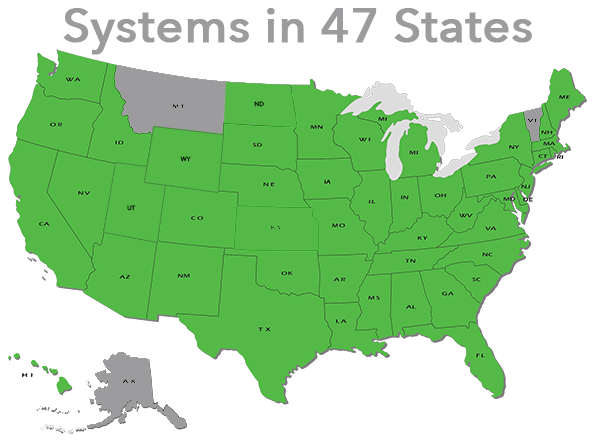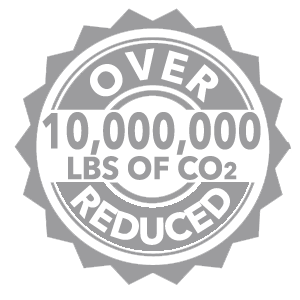How to Cut U.S. Emissions Faster? Do What These Countries Are Doing.
The United States is reducing its greenhouse gas emissions far too slowly to help avert the worst effects of global warming. But what would happen if the country adopted seven of the most ambitious climate policies already in place around the world?
Together, these seven policies would slash greenhouse gas emissions in the United States roughly 29 percent below 2005 levels by 2025, and roughly 50 percent by 2050, according to Energy Innovation’s climate policy modeling.
To put that in context, under the Paris climate agreement, the United States vowed to cut emissions at least 26 percent by 2025 and laid out a broad goal of reducing emissions 80 percent by midcentury. Assuming these policies worked as intended, they would take the country a big chunk of the way toward deep decarbonization.
These are not the only steps the United States could take to address global warming. Many of these policies would be politically tough to enact. But modeling their impact gives a sense of how far the country could, in theory, push down emissions by adopting some of the more forceful practices from around the world.
To cut emissions even more quickly and deeply, something the United Nations scientific panel has said is necessary to keep total global warming below 2 degrees Celsius, the United States, along with countries like China and India, would have to go well beyond anything that has been tried to date. That could include a much higher carbon price, investing in advanced clean-energy technologies, retrofitting older buildings, tackling sectors like air travel and shipping, deploying carbon capture systems to further reduce steel and cement emissions, as well as strategies to revitalize forests and curb methane and nitrogen pollution from livestock and farming.
Energy Innovation has created an interactive policy simulator, based on their energy model, that lets you see the potential impacts of a wider array of climate policies and technological advances. One takeaway: There are no silver bullets. Pushing emissions to nearly zero would require a slew of actions to clean up nearly every corner of the American economy.
Methodology
The emissions effects from these seven climate policies were modeled by Robbie Orvis and Megan Mahajan of Energy Innovation, using the firm’s open-source energy model. A full description of the model and its assumptions can be found here.
Historical emissions include all major greenhouse gases as well as land use and forest sinks, based on national inventories submitted to the United Nations. “Current trend” emissions projections are based on the 2018 Annual Energy Outlook modified to include updated data on technology cost trends as well as projections on non-CO2 greenhouse gases, land use and forestry changes.
Here are the specific policies that were modeled for the United States:
Carbon tax: The tax on coal, oil and natural gas starts at $7.50 per ton of carbon dioxide in 2020 and reaches $37.50 per ton by 2033. This is based on the rates and schedule for British Columbia’s carbon tax, which began in 2008. (The province rebates most of the tax revenue back to its residents, but our policy makes no assumptions about how the money might be used.) Many of the earliest emissions cuts here come from utilities switching more rapidly away from coal.
Clean electricity standard: This policy is partly modeled after existing state-level standards. It requires utilities to increase the amount of electricity they produce from carbon-free sources — including wind, solar, nuclear, hydro, geothermal and biomass — until they reach 100 percent clean electricity in 2050. For comparison, California is steadily increasing its clean electricity requirements to 100 percent by 2045, while New York has announced a 2040 goal.
Electric vehicle push: Rather than model Norway’s specific set of electric vehicle tax incentives, this scenario assumes that the United States makes a push to match the rapid recent growth in Norway’s electric vehicle sales over the next eight years. (Between 2011 and 2018, electric vehicles and plug-in hybrids went from 1.6 percent of new sales in Norway to 49 percent.) After 2027, the electric vehicle share of new passenger car sales rises linearly until they account for nearly all of new sales by 2050. This policy does not affect trucks, buses, ships or airplanes.
Industrial efficiency standards: The industrial efficiency gains are based on a 2016 Department of Energy study that looked at the potential for the industrial sector to double its energy savings above expected improvements. Our scenario assumes that these industries achieve half of this potential. The model does not account for possible trade impacts from these rules.
Building codes: This policy reduces energy use in new homes and buildings. In 2016, the California Energy Commission calculated that the state’s stricter building codes would reduce energy-use intensity by 29 percent for residential buildings and 13 percent for commercial buildings, compared with existing national standards. Our scenario assumes that the United States could achieve similar reductions by 2050 by adopting a California-style standard nationwide. It does not affect energy use in existing buildings.
Methane standards: Canada’s methane rules aim to reduce emissions from oil and gas operations 40 to 45 percent below 2012 levels by 2025. The policy in our scenario aims to reduce U.S. methane emissions from oil and gas 40 percent below projected levels by 2030.
HFC phaseout: This policy reduces the use of hydrofluorocarbons in line with the requirements under the 2016 Kigali Amendment to the Montreal Protocol, an agreement that the United States signed but has yet to ratify. In comparison with projections of HFC growth, this policy would reduce emissions from fluorinated gases by 96 percent by 2050.
The model also captures interactions between these policies. A push to promote electric cars is far more effective at reducing emissions if the grid charging these vehicles is getting cleaner at the same time. Conversely, industrial efficiency standards have a smaller impact if there is already a carbon tax in place spurring companies to find energy savings on their own.
There are some important limitations, however. The model assumes these policies all work as intended. But in the real world, utilities could find it prohibitively expensive to get to 100 percent clean electricity without the development of new technologies such as seasonal energy storage, advanced nuclear power or carbon capture. Similarly, even if the United States had Norwegian-style incentives in place for electric vehicles, Americans might not necessarily buy plug-in vehicles at the same rates as Norwegians do.
The model’s projections are also highly sensitive to assumptions about future economic growth and technology improvements that are hard to predict 40 years out. A major breakthrough in battery chemistry, for instance, could help speed up the pace of grid decarbonization or electric vehicle adoption.
























